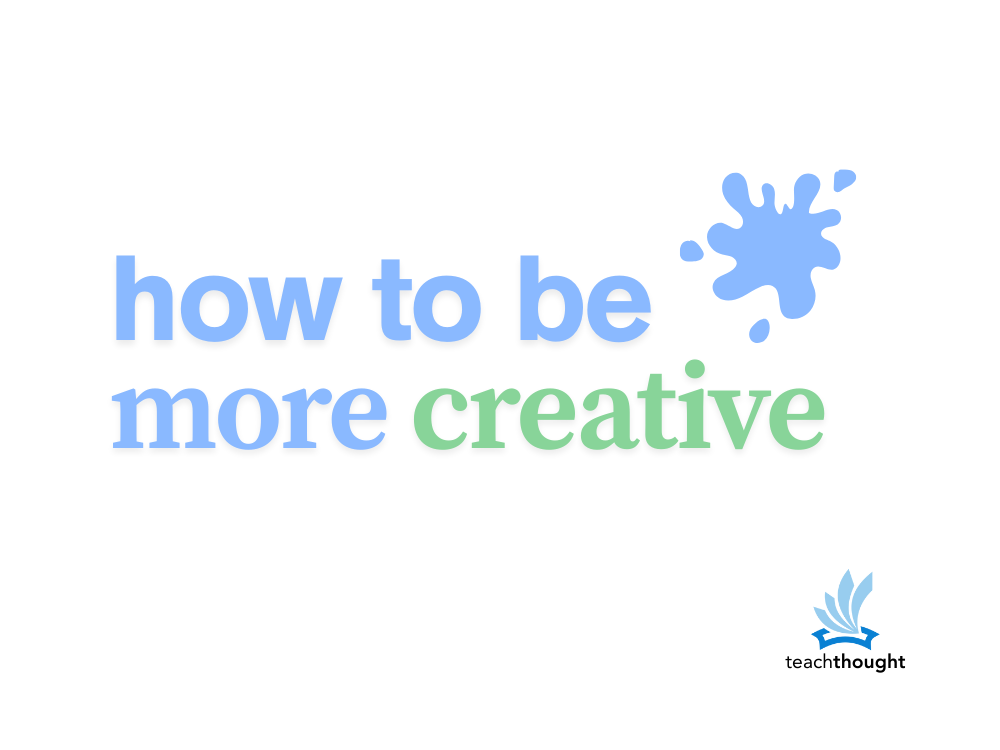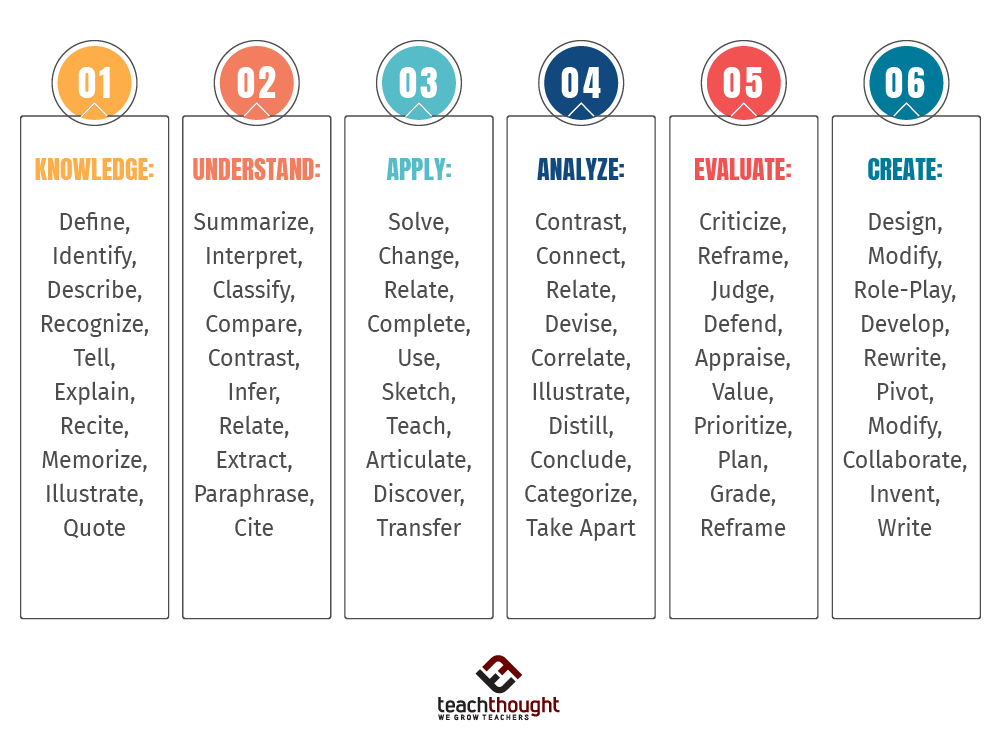by TeachThought Workers
In response to a examine printed within the Pondering Expertise and Creativity journal, college students who usually have interaction in inventive duties present statistically important good points in problem-solving and reflective judgment (Beghetto & Kaufman, 2014).
In different phrases, fostering creativity is not only about making college extra enjoyable—it cultivates the very considering habits that help college students as they develop.
How Creativity Works
Creativity arises from the dynamic interaction of a number of mind networks.
The default mode community (DMN), energetic throughout introspective actions like daydreaming, facilitates spontaneous thought era. The manager management community (ECN) governs targeted consideration and important analysis of concepts, whereas the salience community acts as a change, toggling between the DMN and ECN to stability free-flowing thought with goal-directed focus.
Areas such because the prefrontal cortex, answerable for planning and decision-making, and the hippocampus, are vital for reminiscence retrieval, play important roles in inventive considering. The coordinated exercise amongst these areas allows the era of novel and priceless concepts.
It’s Not Merely A ‘Determination’
Creativity isn’t a light-weight change. It’s not one thing you both have or don’t, neither is it a magical state that descends when the circumstances are excellent. Creativity is motion. Curiosity, made seen. A sample of seeing, connecting, and remaking. It’s one thing you observe greater than possess.
So if we’re going to speak about how one can be extra inventive, let’s first admit that creativity isn’t one factor–and whether it is, it’s not creativity.
Methods To Be Extra Inventive
1. Begin by noticing extra.
You may’t be inventive with what you don’t discover. Creativity is dependent upon consciousness—the sort that sees not simply what’s there however what isn’t. Noticing is greater than remark; it’s tuned consideration. Patterns. Anomalies. Gaps. Risk. Most of us are too distracted to note a lot of something.
Follow noticing. Not for the sake of trivia or novelty, however for the uncooked supplies of inventive thought. Take psychological (or literal) notes: That metaphor within the podcast. The best way the morning gentle reduce by the timber. The best way a scholar solved an issue in a very sideways means that by some means labored.
2. Ask higher questions.
Most of what we name creativity begins with a query. Not “What ought to I do?” however “What if I didn’t?” Not “What’s the suitable reply?” however “Why is that this the query?” Questions reframe. They loosen the boundaries of an issue so one thing new can occur.
Do this: As an alternative of brainstorming solutions, brainstorm questions. In conferences, with college students, with your self. Make the questions extra summary or extra grounded—regardless of the second wants. If creativity is a form of cognitive motion, then questions are the friction that will get it going.

3. Change your inputs.
You may’t maintain feeding your self the identical issues–the identical concepts, kinds, and views–and anticipate to give you one thing new. In case you learn the identical blogs, scroll the identical feeds, speak to the identical folks, and observe the identical workflows, you’re going to maintain making the identical sorts of issues.
Search new inputs. Journey is sweet, however so is listening to somebody you normally ignore. Learn one thing that disagrees with you. Strive a brand new software, even when it slows you down. Particularly if it slows you down. Your inventive output is downstream of your inputs, so make them unusual and extensive and typically uncomfortable.
4. Belief the mess.
Creativity hardly ever exhibits up in clear strains and bullet factors. It’s a bit feral. The early levels of inventive work typically seem like chaos—and that’s as a result of they’re. However chaos is knowledge. It tells you what may occur, and that’s way more priceless than what ought to.
The issue is that we’ve been taught to mistake messiness for failure. We edit earlier than we discover. We search readability earlier than we have now content material. However inventive work is recursive. You progress ahead by looping again. You make clear by making. You refine by ruining. So belief the mess, and maintain going.
5. Make area for boredom.
Boredom is the compost of creativity. It clears out the noise so your thoughts can begin making one thing of its personal. However in a hyperconnected world, boredom’s an endangered species. We fill each clean second with scrolling and checking and refreshing, which implies we hardly ever sit lengthy sufficient with a thought for it to change into something helpful.
Be bored on goal. Take a stroll with out your cellphone. Let your self be unentertained. Not as a result of it’s virtuous, however as a result of boredom creates cognitive slack—psychological room for concepts to collide, develop, mutate, and spark.
See additionally The Advantages Of Creativity In The Classroom
6. Create earlier than you devour.
This one’s easy however brutal. Earlier than you examine e-mail, write. Earlier than you scroll, sketch. Earlier than you go searching for concepts, attempt to give you one. Even when it’s unhealthy. Particularly if it’s unhealthy. Creativity is dependent upon momentum, and consumption stalls that momentum earlier than it begins.
Making one thing—even one thing tiny—very first thing every day sends a sign to your mind: That is who I’m. That is what I do. Over time, that sign will get stronger. Finally, you cease ready for permission to create and begin seeing each second as a spot it may occur.
7. Bear in mind: Creativity is a posture, not a product.
You’re not inventive due to what you make. You’re inventive due to the way you suppose. Since you’re prepared to be mistaken. Since you chase issues that may not work. Since you see the world not simply as it’s, however because it may be.
See additionally The Greatest Quotes About Creativity
Being extra inventive, then, isn’t only a matter of technique. It’s a means of being on this planet—a willingness to disrupt your individual considering, to remix previous truths, to remain uncomfortable lengthy sufficient for one thing unique to emerge.
8. Collaborate with individuals who suppose in another way.
Creativity doesn’t thrive in echo chambers. It feeds on friction—on competing concepts, odd pairings, and conversations that don’t resolve too simply. While you work solely with individuals who see the world the best way you do, you find yourself reinforcing what you already imagine. Which may really feel good, however it hardly ever leads wherever new.
Hunt down individuals who ask totally different questions than you do. Who worth various things. Who annoy you a bit of bit, however in one of the best ways. Not as a result of disagreement is the objective, however as a result of distinction clarifies. It helps you see the perimeters of your individual considering—and that’s typically the place the perfect inventive work begins.
Creativity In The Classroom
Creativity can be related to innovation, which depends upon a stability of reasoning expertise and creativeness – what many individuals confer with with the cliché ‘considering exterior of the field.’
This synergy is very clear in project-based studying, design considering, or inquiry-based school rooms. As an illustration, when college students design an answer to a group downside, they have to brainstorm (inventive considering), analyze constraints and knowledge (essential considering), and iterate based mostly on suggestions (each). Creativity fuels the Lateral, Divergent, And Convergent Pondering that generates choices, whereas essential considering brings convergence—serving to college students resolve what’s most viable, moral, or efficient.
In response to a examine printed within the Pondering Expertise and Creativity journal, college students who usually have interaction in inventive duties present statistically important good points in problem-solving and reflective judgment (Beghetto & Kaufman, 2014). In different phrases, fostering creativity is not only about making college extra enjoyable—it cultivates the very considering habits that put together college students for advanced, real-world challenges.
The excellent news for college students is that you simply don’t must take a particular course that requires creativity. You may observe growing this talent by yourself, starting proper now. Listed below are two further methods you should use to faucet into your inventive potential.
1. Know When to Work and When to Cease
Jonah Lehrer, creator of Think about: How Creativity Works, shared his perspective for growth of creativity as a talent in his article, How To Be Inventive. To entry our pure inventive capability we have to be taught to rely on our instinct, which researchers name our “emotions of figuring out.” Two sorts of issues require creativity: moment-of-insight and nose-to-the-grindstone conditions.
In case you are engaged on a undertaking and have a sense (your instinct) that you’re near getting a solution or answer, that’s the time to maintain working by it (nose-to-the-grindstone). Nonetheless, in the event you really feel caught and wish new perception, that’s the time to take a break (moment-of-insight). While you really feel the necessity for a break, you both want an alternate perspective or further info. And analysis exhibits you’ll doubtless get the perception or “aha” second when you step away from the undertaking or downside.
2. Develop a Mindset for Creativity
That is most likely the one barrier that forestalls college students from studying to develop their inventive capability, a limiting self-belief. “I’m not a inventive individual” can restrict your potentialities. You may prepare your self to be inventive just by permitting time to make use of your creativeness. It doesn’t must be an advanced course of both.
The subsequent time you’re given a undertaking that requires you to develop a brand new final result, answer, or different perspective, take a couple of minutes to permit your thoughts to wander. Some college students confer with this as brainstorming or free-writing. Let the concepts move first after which course of it by logic, reasoning, and emotions. The most effective reply might not at all times be the ‘proper’ reply, and that’s the way you be taught to change into inventive.



